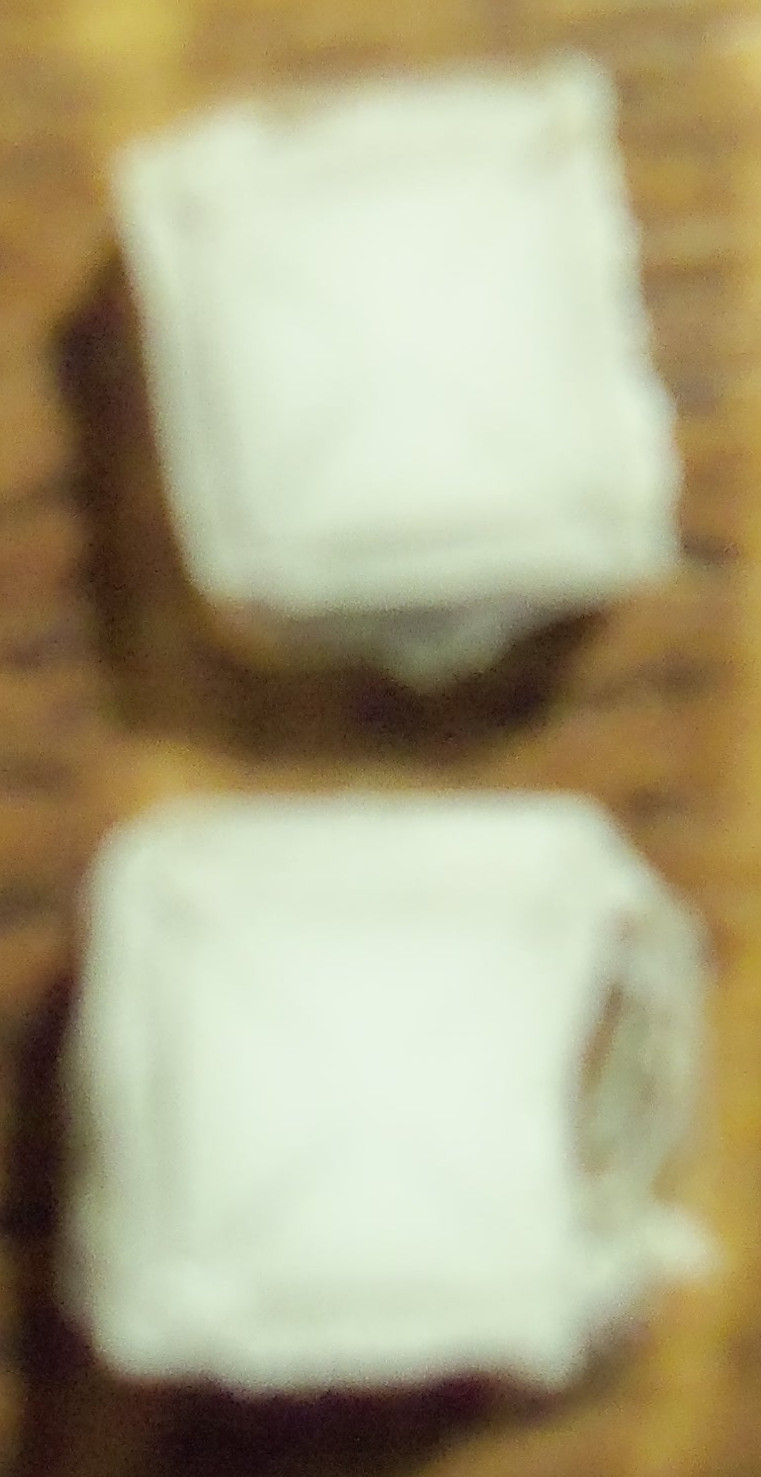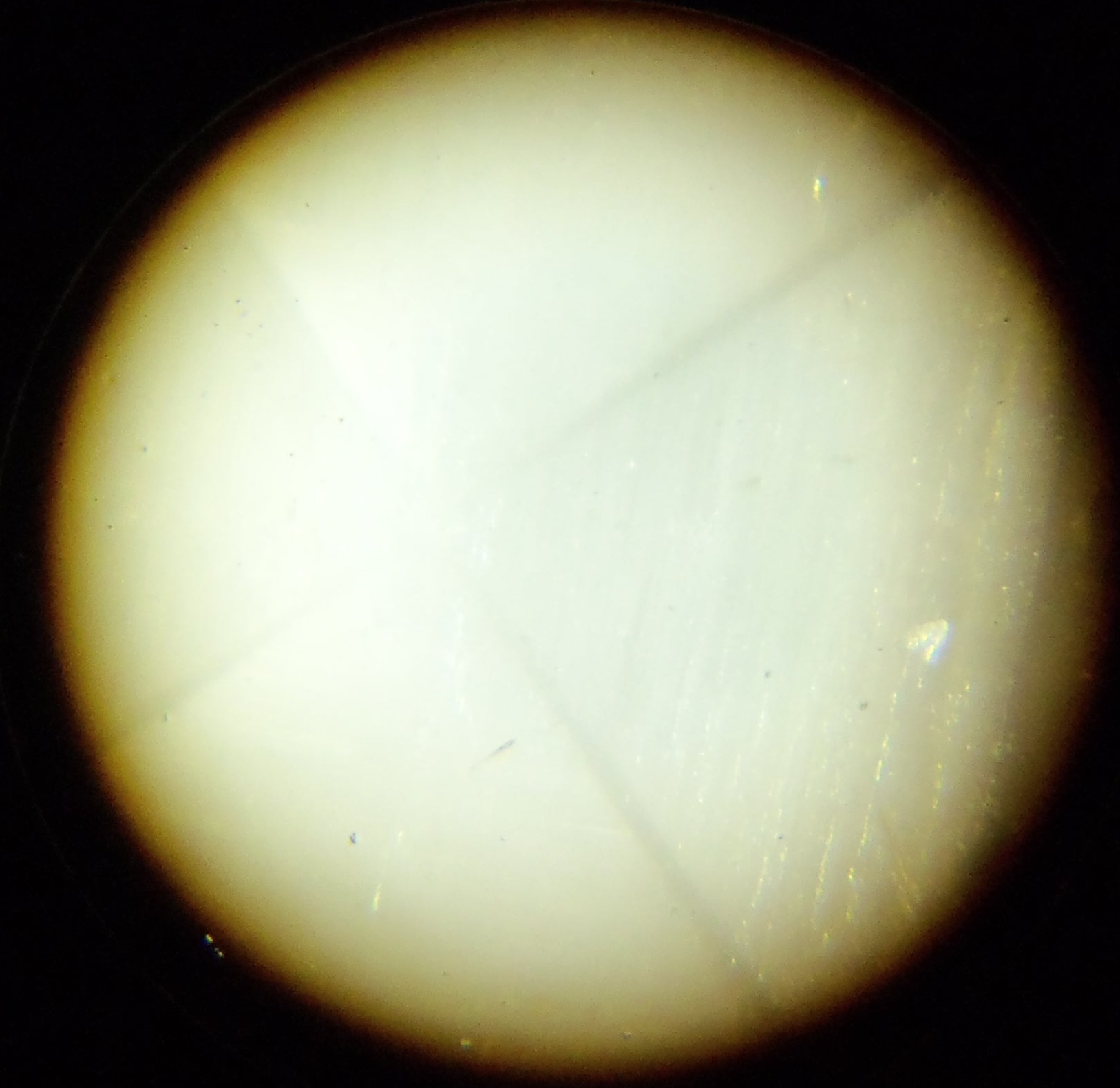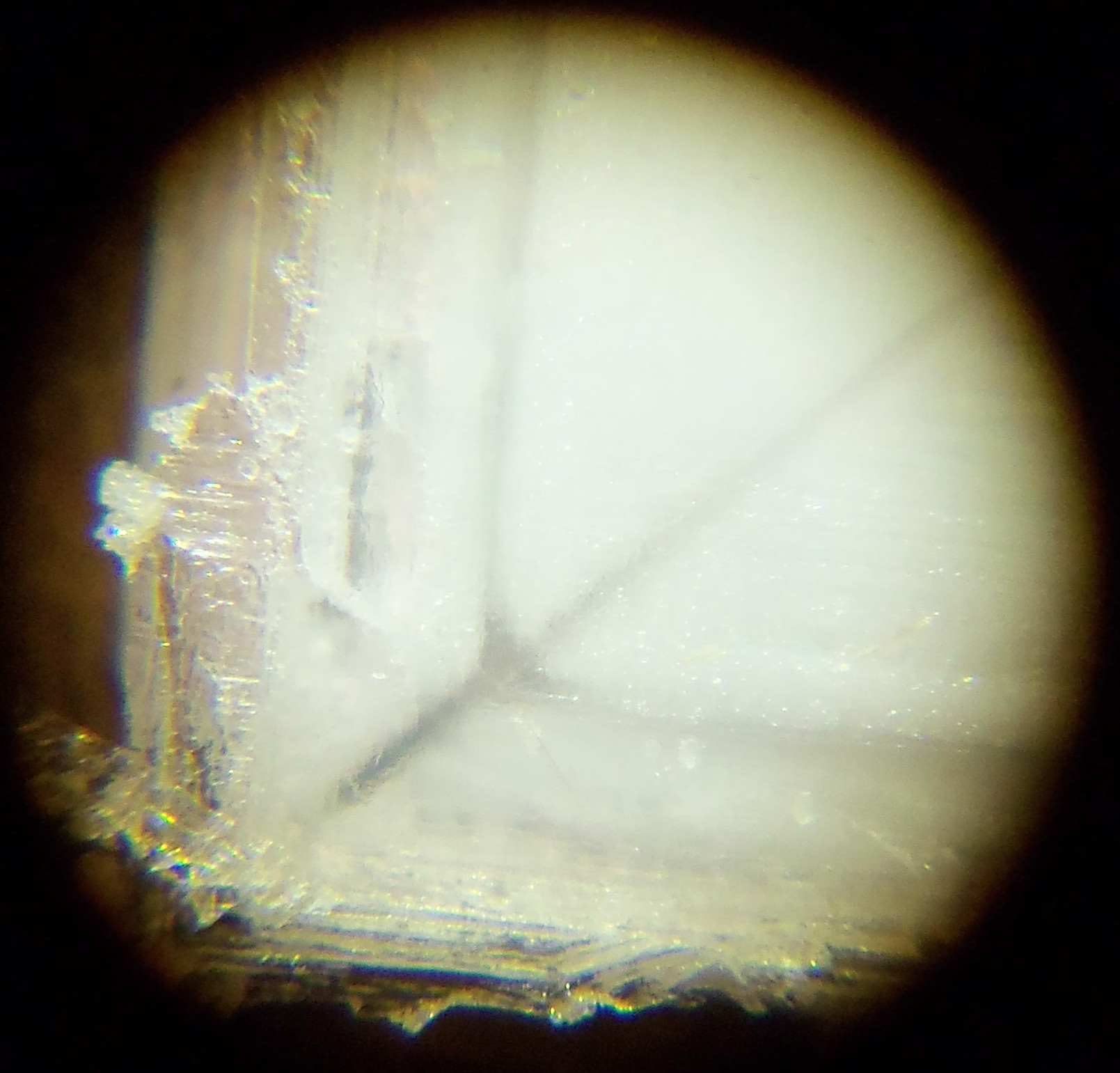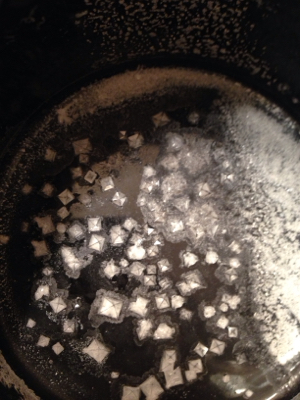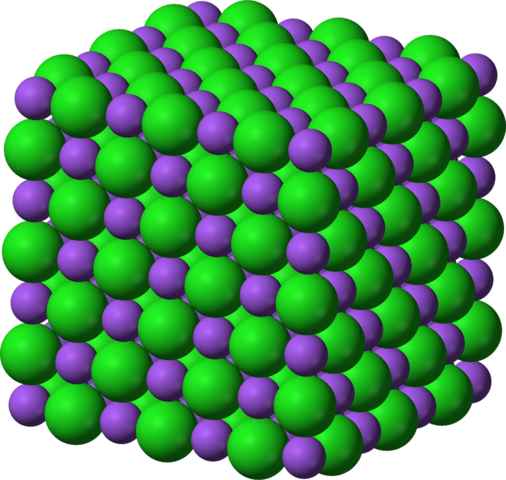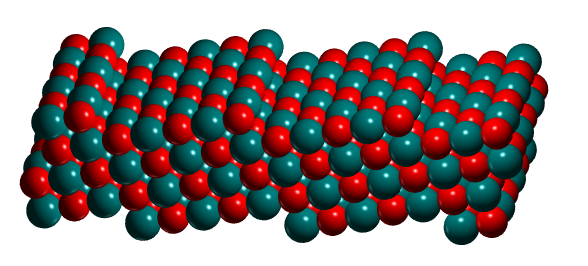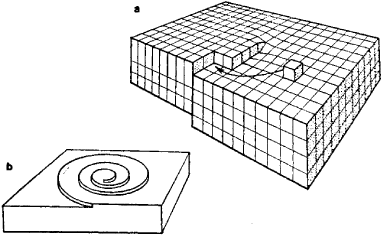I am an amateur, with very little professional chemistry knowledge. I was doing a demonstration / experiment with my 6 year old child.
We took very warm normal tap water, and dissolved into it a large pile of normal table salt. I didn't measure anything particularly, because I was just showing the basic concept of 'dissolving'. That's all. My kid was amazed to see the white pile of salt disappear visibly, but upon tasting the water understood what had happened.
Next we left the bowl up on a high shelf for 2 weeks, to let the water evaporate. This morning we took a look, and were rewarded by a dry bowl full of beautiful perfectly square salt crystals, many of them between 4-6mm in width.
That the crystals were perfect squares did not surprise me, as I have read that sodium and chlorine atoms form a cube shape at an atomic level.
But I could not answer the question about what the 'X' pattern marking was on each square. I have tried to attach photographs to show what I mean. The 'normal' picture is blurry, but if you look you can faintly see an 'X' on each crystal.
The other 2 pictures are each at 20x, using the Natural History Museum Pocket Microscope.
My question is, what explains those 'X' shapes? If possible I need to translate the explanation into 6-year-old talk :-)
